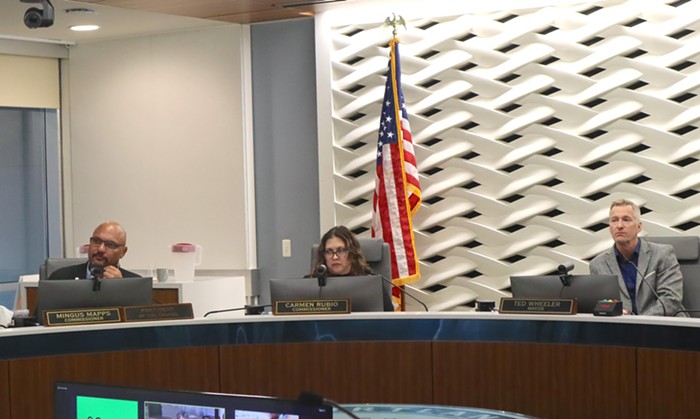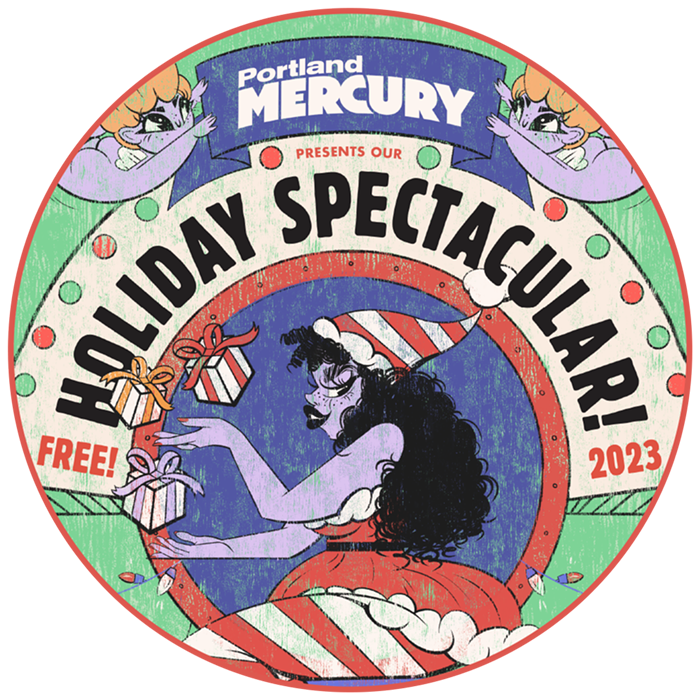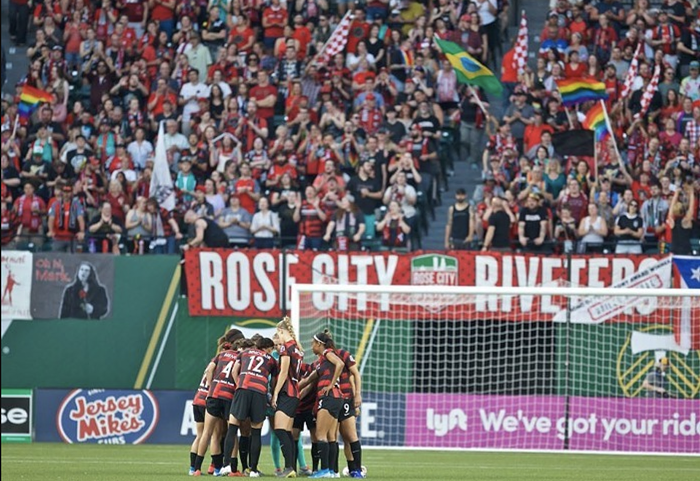
After nearly 16 years, the US Environmental Protection Agency unveiled a proposal today for cleaning up the Willamette River's toxic bed.
The brand new proposal [pdf] is far less expensive than many expected Portland Harbor Superfund cleanup to be. But it also leaves roughly 93 85 percent of the nearly 2,200-acre, 10 mile site untouched. The superfund stretches, roughly, from the Fremont Bridge to the Columbia River.
As expected, the plan hews fairly closely to another plan that the EPA's Pacific Northwest office signaled it favored in a presentation last year. What differences exist won't thrill environmentalist groups. The plan offers a less involved approach to cleaning up the riverbed, which was infected with dozens of nasty compounds like DDT and PCBs over the course of a century of wanton dumping.
While the plan floated in November would have dredged—that is, scooped up and removed—more than 2.2 million cubic yards of tainted muck, the proposal the EPA arrived at would dredge nearly 1.9 million, along 38 fewer acres of river bottom.
The new plan also walks back slightly the amount of the site the EPA will cap to prevent exposure to fish species. And it will leave 38 more acres of contaminated river bottom untouched—1,876 acres of the 2,167 acres site, compared to 1,838.
The EPA's proposing active cleanup on only the highlighted areas in the map below:

Officials with the EPA downplayed those differences in a call with reporters, stating they'd come up with a plan that will effectively treat the most toxic pockets of the site, while leaving more-benign areas to tidy themselves.
"I think it represents our collective best judgment as the best way to clean up the site," said Jim Woolford, who heads up superfund cleanup for the EPA. "The plan that’s offered today represents a very balanced approach."
But the proposal's a disappointment to groups that had been pushing the EPA to push a more comprehensive cleanup option.
"It looks like pretty weak tea," says Travis Williams, with Willamette Riverkeeper. "They brought a nine volt battery to a party that needs a big old power cable."
One hugely striking aspect of the new plan: The clean-up officials are proposing will apparently cost far less than anyone was anticipating.
The EPA pegs costs at $746 million over the course of seven years of active work, should the public agree that a toxic waste disposal site can be constructed at the Port of Portland's Terminal 4, a little less than two miles north of the St. Johns Bridge. If public outcry overrules that dump site and the muck has to be shipped elsewhere, it'd cost around $811 million, the EPA says.
Either way, it's at the far low end of what most people have been counting on cleanup costing. The city recently pegged a likely price tag at between $800 million and $2.5 billion. And that "preferred option" presented in November would have cost $1.5 billion, the agency said at the time.
So what changed? The EPA's number crunching, apparently.
"What changed is not so significantly the amount of design, it is the cost estimate," said Dennis McLerren, who heads up EPA's Region 10, based in Seattle. McLerren says the agency dug deeper into its cost assumptions, and found the cleanups it was mulling would cost far less than previously assumed.
The preferred alternative that was pegged at $1.5 billion in November, for example, would cost a maximum of $870 million under the latest suppositions, the EPA says.
Cost, obviously, is an enormous factor here. The EPA has named more than 150 "potentially responsible parties"—mainly industrial concerns who've contributed to polluting the river over the last century. The City of Portland is also on that list. And while no one can say how much of the burden for cleanup will be shouldered by any individual party—that'll be worked out later—it's obvious that the less expensive the cleanup, the less people will have to pay.
What's truly at stake in all this? Superfund cleanup is most vital for the health of certain resident fish populations (carp, bass, catfish) who spend their lives exposed to the toxic muck, rendering them hazardous to eat. That's a huge problems for some cultures that rely on fish for subsistence. State health officials recommend that healthy adults eat an absolute maximum 8 oz of resident fish from the superfund a month. Kids, women of "childbearing age" and people with certain health problems shouldn't eat any.
The EPA goes further than that.
"Nobody should eat resident fish from the river today," said Cami Grandinetti, an EPA manager based in Seattle. Once the EPA fully builds out its cleanup plan, she says, the goal is that people can eat five fish a year. Roughly two decades after that, the goal is that people would be able to eat just under 20 fish a year.
Williams, of Willamette Riverkeeper, thinks those assurances are pathetic.
"I think the Willamette River deserves more, I think the people of Portland deserve more, and I certainly think wildlife deserves more," he says. "They ought to be able to guarantee all of us that at the end of this process a fish advisory is lifted in the Portland Harbor."
That's not the only think rankling advocates. Now that the proposed cleanup plan has been released, the EPA has opened a 60 day comment period, during which citizens can make their thoughts about the proposal known. Folks like Williams and the Audubon Society of Portland's Bob Sallinger have been making the case that that's not nearly enough—particularly at the outset of warm summer months when people are vacationing.
Both groups are hoping to muster campaigns that convince the EPA to bolster its cleanup plan, and both are calling for the comment period to be extended to 120 days.
"In terms of both process and substance the EPA has totally failed this community," Sallinger tells the Mercury. "It's going to be essential that we have a reasonably and sufficient comment period in order to ensure the public fully understands."
But there's another matter at play in all this. At the same time it's pushed back release of the cleanup plan again and again and again, the EPA has also maintained that it needs to get a plan solidified by the end of the year. Any new presidential administration that takes office, the agency says, could delay the process by "as much as a couple of years," according to McLerran.
Getting just a proposed cleanup plan has been met with consistent delay—both because of problems at the EPA and demand brought on by enormous records requests filed by harbor polluters.
The Lower Willamette Group, a coalition of 14 river polluters including the City of Portland, issued a statement today saying it "appreciates" the EPAs work, and is still looking the proposal over.


















